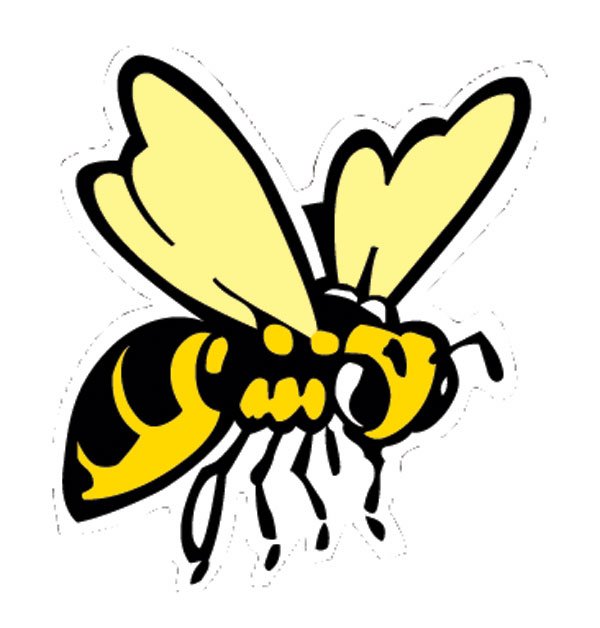Honeybees drone in the still afternoon air forming a small cloud
next to the barn where their hive is normally stationed.
”
They can tell colors,
”
says Wayne Pitts, a software designer and sometime beekeeper who
lives in Gilroy.
”
They have memory. They even communicate with dance, but you can
move a bee hive two feet or two miles and they can’t find it.
”
Honeybees drone in the still afternoon air forming a small cloud next to the barn where their hive is normally stationed. “They can tell colors,” says Wayne Pitts, a software designer and sometime beekeeper who lives in Gilroy. “They have memory. They even communicate with dance, but you can move a bee hive two feet or two miles and they can’t find it.”
Pitts moves the hive back to its original location and the bees flood into their door ready to share their latest find with the collective. The comment seems telling of these insects that rank among the most studied creatures in the world. Honeybees live by a complex set of social rules, yet their world is incredibly fragile. The bees are becoming more animated, so Pitts lights his smoke can again and begins pushing out a small gray stream with the tiny bellows on its side.
“They communicate with smells,” he says. “They use up to 40 different pheromones to talk to one another, but smoke keeps them from being able to communicate.” His visitor is much relieved, as hundreds of bees buzz in the open air near the hive.
Prior to the industrial revolution, beekeepers in England and continental Europe maintained hives in something called a skep. The inverted wicker or straw basket gave bees the sheltered space they needed to deem the area safe and make it their new home. Once the skep attracted a hive, they could be moved to a more permanent and accessible position, and would build their own wax combs onto the inside of the skep.
Unfortunately, to harvest the colony’s honey, beekeepers were forced to destroy their hive to extract the honeycomb. Today’s methods are thankfully less harsh. Pitts uses a top-bar hive, a wooden box whose sides slope in toward the bottom. The angle of the walls keeps bees from depositing their honeycombs on the sides of the hive, forcing production to be limited to the roof, which is made up of moveable wooden slats. The basic idea of a top-bar hive was first described by Englishman Sir George Wheeler’s 1682 book “A Journey Into Greece,” but today’s version is often known as a Kenyan hive because of its extensive use throughout Africa by the United Nations.
Top-bar hives produce less honey per year, but are also far less expensive to make and maintain than any other variety, since they can be made quickly out of nearly any material from scrap lumber to clay to bamboo. Provided they’re given a sheltered space in which to build a home, bees will live just about anywhere you put them.
Elementary school teacher Greg Muck, a Watsonville resident, plunged into the trade in the spring of 2002 when a friend who was moving offered her bees to him. He moved them down to his home, but Muck’s collection didn’t stop there.
“I’m registered with the police and sheriff’s departments, the agriculture department, pretty much everyone,” said Muck. “When there’s a swarm of bees most people call the police. The police give them my number, and if I’m in the area I go out, box them up and take them to my house.”
Muck now has five hives spread between friends’ properties in Watsonville, Hollister and Big Sur. He sells his honey in unmarked jars by word-of-mouth advertising for now, but hopes to label and sell some in local markets within a year.
“The bees in Hollister do really well – they like the open, irrigated area,” said Muck. “For some reason the bees in Watsonville I’ve been having trouble getting through the winter, so we don’t have that much honey there. We do have a bumper crop of apples in Watsonville, though. You have a bumper crop almost every year when you have bees.”
Pitts’ own fascination with the science of beekeeping, began in West Virginia, where his father-in-law was an enthusiastic apiarist (beekeeper). The 56-year-old Pitts moved to Gilroy in 1988 and started off with his own hive in 1998. His hives are too few in number to produce marketable honey, but a good hive can produce 50 to 100 pounds a year.
Honey in the comb is white; its amber color the result of the pollen that bees track into their abode. Pollen is their main source of protein and honey, which they make from nectar, is their main carbohydrate. European bees, hivebound during winter months, will store their honey and stop producing it when they think they have enough. As long as keepers remove the supply, the bees will continue to forage for nectar and make honey.
The little buggers are equipped with a huge amount of onboard navigational information, too, tracking their direction, distance from the hive and physical capacity as they fly. However, they are also highly susceptible to hive-obliterating diseases. The most vicious killer, according to the University of Kentucky’s entomology department, is the varroa mite, which was introduced to Florida from Southeast Asia in the mid to late 1980s. This bloodsucker nearly decimated North American honey production by the 1990s, said Pitts, who is also president of the Gilroy Bee Keepers Association. He estimates that local yearly losses (even with intervention) still hover around 25-30 percent.
Honey production has remained relatively steady in the United States since 1989 with about 180 million pounds produced per year, but mites have forced prices up. According to the National Agricultural Statistics Service honey’s product value has risen from just under $90 million per year to a new high of $256 million in 2003.
Bees and honey
To sample the honey supply from around the area, stop by Rocca’s Market at 13335 Monterey Highway in San Martin and try Amen Bee Products’ California Virgin line.
For more information on raising your own bees, contact the Gilroy Beekeepers Association by visiting www.hotcity.com/~bees or dropping by a meeting, held at 7pm on the second Tuesday of the month, Grange Hall, 8191 Swanston Lane.













